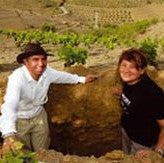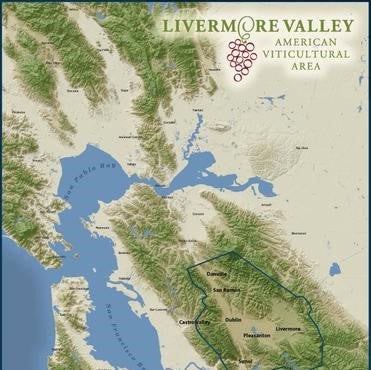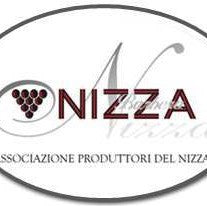Lydia & Claude Bourguignon
Partners in work and life, Lydia & Claude Bourguignon are the most heralded viti-soil scientists in the world with clients extending beyond their native France to include New Zealand, the US, and several European countries. Often based in the Cahors area when not at their Burgundy home, the past few years they’ve renovated their circa 1725 farmhouse winery along the Lot river, planting a site comprised of 5ha of Malbec and one of Sauvignon Blanc with their first harvest this autumn eagerly awaited. I passed time with ‘the soil whisperers (thanks to Chicago’s Larry Gurner for that one) last month at Château de Mercuès during Cahors’s Malbec Days.
The sense and sensibility of terroir is arguably well-founded in the Old World. How, if at all, might this occur in the New World?
There is terroir in the New World but it’s usually overly influenced by Bordeaux so you always find Cabernet Sauvignon and Merlot. In Cahors the choice of Merlot is a good one if the vineyard is near the river but not on the hills or plateau because these terroirs aren’t good for it. When the AC was defined in 1971 they excised the variety of Jurançon Noir, a red grape traditional to the area; tannic, rustic, and maybe not very good but it played a part in the composition of the cuvées in which Merlot was used. In Napa Valley, Argentina, and Chile what is changing is that new plantings are shifting from valleys to hills where they make better wines and realize what the Romans said, “Bacchus loves hills”. This Roman proverb works there, too, though the New World hasn’t yet the time for empirical experiments like in the Old.
The presence of minerality in wine–how is it qualified?
In some cases, such as in Italy where rocks may be rich in magnesium, this finds its way into wine by a touch of bitterness…and magnesium is a bitter salt. If you drink wine coming from Bordeaux one can have a salty note, you can feel the salt in the mouth. This level of minerality is correspondent to that of mineral waters sometimes having a salty or bitter taste. Another sensation is that of wines coming from sandy soils; you feel a sandy texture in your mouth. A wine from clay soils give a sense of a heavy or a clay-like feeling in your mouth, Champagne’s chalky soils giving a chalky note to the wines. But there is no scientific basis for that sensation. In French we have the phrase ‘tater’, the act of putting wine between your tongue and roof and sensing its tactile characters. This was the basis of the use of the ‘tastevin’ which helped the taster in times past to determine if a wine was authentic or of a salable quality…by a sensation in the mouth. Èchezeaux gives a velvet sensation, Romanée-Conti gives an impression of silk in the mouth.
How do you reckon upon the influence of microorganisms upon the vine, and then the final taste of the wine?
What you feel in your mouth are carbon molecules, normally coming from photosynthesis and the atmosphere. All proteins in plants are derived from enzymatic processes. Enzymes are proteins with metallic co-factors, and these metals can come from the atmosphere. Some rocks have more of one mineral than others; for example Morgon is rich in manganese which gives its distinguishable character, different from that of Fleurie or other Beaujolais Crus. If you kill your soil microbes with chemicals then you decrease the biological activity, so then you’re obliged to replace what the soil would otherwise give with added enzymes and other such things. The soils then become uniform to others worked in this way with the results of creating wines which show more the hand of the winemaker than an influence of soil. Our friend (the wine writer) Michel Bettane has told us that during tastings he’s found that he sometimes has trouble distinguishing between the same wines made from different soils because of overbearing human intervention.
Which areas in the New World have presented the most significant challenges to you and your clients? In the Old World?
The hills of New Zealand’s south island and California’s Mayacamas Mountains that are west-facing we find a rare aspect of volcanic composition. We’ve found a very beautiful terroir in Walla Walla, a ‘volcanic Châteauneuf du Pape’ with basalt in place of quartz. In California, Oregon, and NZ’s south island you have great climate, geology, topography, and soils. In California and Oregon you have a good climate to produce wine; at harvest you have cool nights and hot days as opposed to the east coast where you have too much heat and humidity in summer and into autumn so you have a hard time making good terroir wines. But we’ve recently seen fabulous terroir in Virginia and Maryland but its climate too often destroys vine buds, its hot and wet conditions in summer bring diseases. Soils in Virginia date to 600m years ago, some of the oldest in the world; but the difficulty is the climate so we must adapt the pruning and the rootstock all to this situation.
 Your website of LAMS-21.com lists your various services broken down with the charges for each of them, a unique aspect in presenting this sort of work. Why choose that method?
Your website of LAMS-21.com lists your various services broken down with the charges for each of them, a unique aspect in presenting this sort of work. Why choose that method?
Wineries often speak of terroir but they don’t often invest in its details. People don’t want to spend money for their soils–enology and winery construction, yes, but soils aren’t important enough for them. Vinification is relatively quick to alter but to change a soil from average to good takes a few years of work. For us learning of new soils takes time and work. Potential clients appreciate our work but too often they think that winemakers make the wines and the marketing, that the soil isn’t so important. They wonder if hiring us will improve their business. It’s slowly changing because we work with some famous names in France and elsewhere. Sometimes we don’t bring good news. People are sometimes anxious that we may say that their soils aren’t as beautiful as they think–if we tell them that they only have superficial roots then they’ll be disappointed, that maybe to restore soil health it may take five years. After four years of working with Harlan it now has a very interesting evolution of their Promontory wines.
When sharing information of a wine with his/her customer with maybe only 2 minutes to give, what points should a sommelier bear in mind?
Just say where the wines are coming from, the impression of what the tactile sensation may be…if the taste reflects sand or sulfur or chalk. Perhaps give a customer a piece of silk asking if they may equate the sensation of it with the wine you’re trying to sell them which may possess this quality. The sommelier must know the soils from which the wines they’re selling originate; if they don’t then it will be difficult to explain in only 2 minutes. A week ago we were in Tokaj where we drank many types of wine which had a bitterness in the wines. We thought then there was magnesium in the soils, and our thoughts were confirmed by the winemaker we were with. An Italian winemaker once showed us two bottles asking us to guess their soils; we said one was from loamy soils, the other from sandy, and we were correct. We use an old tasting method called ‘tater’, a method which is being renewed using both the nose and the mouth together, but the sommelier must develop skills in this old method to understand it. If a sommelier tastes 50 wines from around the world in one day it becomes difficult to define this process.
When the two of you are dining, what do you bear in mind when seeking a complimentary wine?
If you have the chance to know a place then it’s easy, such as Chaource cheese with Champagne. When you don’t know the wines or the foods it’s easy to make mistakes, so if a restaurant’s menu if international in scope then it’s difficult to know how to pair these foods. That’s where the importance of a good sommelier comes into play–s/he knows the food and their wines. There are very few restaurants where sommeliers do a good job of this, but this point is very important to us.
Learn more about food and wine pairing in our Food Pairing Lab Workshop.
Check out our full schedule of programs, workshops and public events. Private, customized experiences and corporate training is also available.



